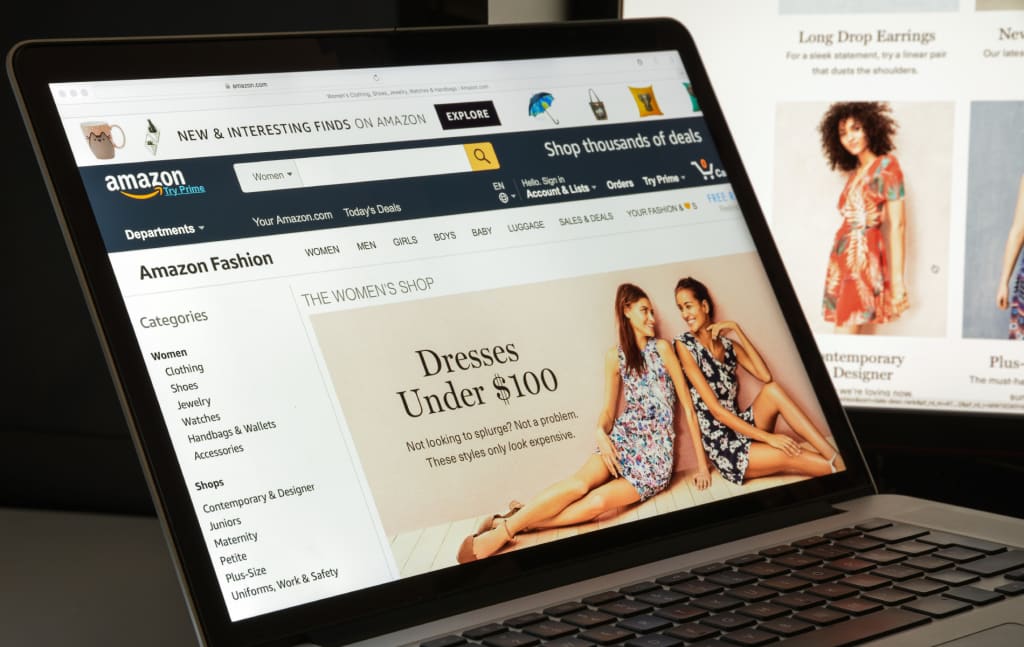8 Reasons Why Amazon Isn’t For Every E-Commerce Brand
Relying too heavily on a platform as dominant as Amazon to run your business could spell disaster for many brands, and here are eight reasons why:

Amazon is by far the largest online marketplace in the entire world. Starting as a humble online bookstore, it has expanded into several verticals and now gets 200 million unique visitors per month. Naturally, such a large marketplace is quite attractive to small brands looking to grow their sales.
You too might want to learn how to sell on Amazon; but, is selling on Amazon worth it in the end? Should you focus solely on Amazon? Or, should you concentrate on optimizing your own site?
Relying too heavily on a platform as dominant as Amazon to run your business could spell disaster for many brands, and here are eight reasons why:
1. Amazon Can Shut You Down... Whenever
Amazon might grant you access to a massive audience, but the trade-off is that it has ultimate control over your fate on the platform. Amazon won’t ban you without a reason, but there’s always the possibility that you unknowingly violate some rule and get kicked off without warning.
If most (or all) of your business is done on Amazon, and it shuts you down, that could destroy your entire business. If you must use Amazon, try to keep it as but one of your many marketing/sales channels.
2. The Payment Schedule
Amazon direct deposits your earnings into your linked checking account every 14 days unless you have a legacy account that lets you request payments more often. This can cause huge cash flow issues, especially if you’re moving a ton of volume and need the funds to quickly buy more inventory. It could also hamper overall business growth if you need to invest your revenues in other areas of your growing business.
Technically, you might be able to work around this with various credit options—such as using a credit card or working out a financing deal with your supplier—but this adds more complexity to your business. There are also companies like Payability that help you receive accelerated daily payouts.
3. Competition is Fierce

Everyone wants to take advantage of Amazon’s reach, meaning competition is abundant. Over 2.5 million sellers have products listed for sale on the platform. Such competition means numerous selling jockeying for dominance with the same product—this competition drives prices down and can slim your profit margins. Plus, many of these sellers could be larger brands in your niche with more buying power and brand recognition.
Things are worse if you sell a mass-market product. You’ll need to be on top of your game when it comes to listing optimization so that you get in front of the right clientele, and you’ll almost certainly need to run Amazon PPC campaigns to stay competitive.
4. Offering Excellent, Personalized Customer Service Could be Tough
Amazon limits how sellers can communicate with their customers. For example, Amazon does not allow you to send an email to your Amazon customers stating that you’re “here to help if they need anything” or something similar. You can’t even use email to resell your customers on products—even if you’re selling them on another Amazon listing. And, of course, you can’t link to anything outside of Amazon, such as your brand’s website.
In short, brands that emphasize a personal touch in their marketing to build relationships with customers—especially those that use email marketing—will struggle. Your business can quickly dissolve into becoming an impersonal brand that blends right in.
Bonus: Our friends at eComEngine recently wrote an article that outlines the updates to Amazon's Communication Guidelines, effective November 3, 2020. Be sure to check it out to stay informed.
5. Search Algorithm Updates Can Destroy Your Sales and Revenues
Optimizing your listings and getting your products to page one is fundamental to doing well on Amazon. Thus, you’re at the mercy of Amazon’s search algorithm. One change to the algorithm can ruin your sales overnight by removing you from your excellent ranking.
You’ll then have to spend time reoptimizing your listing for the new algorithm, then wait even longer for your product to move to the top. Not everyone can wait that long, though, so you might have to pay for sponsored listings to offset revenue losses attributable to algorithm changes.
It’s also worth noting that Amazon could always change their algorithm in a way that benefits them at your expense. More on Amazon helping itself next.
6. Amazon Competes With You If You Do Well
Amazon uses third-party sellers, such as your business, to make money on lower-volume, more niche products. Though, like any business, Amazon won’t hesitate to take a fantastic opportunity if it sees one. If Amazon notices you and your competitors are doing well with a particular product, it knows what product it should break into next.
7. Copycats and Counterfeiters
Standing out among legitimate sellers and competing with Amazon is hard enough—but you also have to deal with ill-intentioned sellers and scammers on the platform.
Some of these illegitimate sellers see opportunity in your product. They rip it off and start selling it under their own brand, stealing sales and revenue from you. Others will use your brand name to sell their own products. And still others will do both—they’ll create knock-off, low-quality versions of your products and pretend to be you. This causes you to lose sales, and it sullies your good name.
For example, if you sell branded water bottles, a counterfeiter might sell cheap, poor-quality counterfeit bottles with your branding slapped on and the same listing details. Customers buy the fake water bottle from this bad actor, and when it breaks after a few uses, they blame your brand.
You can file an A to Z complaint against fake sellers, but the scammer might pop up under a different account and continue stealing from you. As your brand grows, you might even have multiple copycats or counterfeits. The issue can quickly become unmanageable.
8. Barriers to Entry
Thanks to the copycats/counterfeiters issue discussed earlier, Amazon has tightened rules on who can sell, what products you can sell, and how you can sell them. The list of product categories Amazon must approve before you start selling grows longer every day, and approval isn’t exactly easy to acquire. Combine that with the fierce competition, and brands new to Amazon will struggle to solidify their presence.
Conclusion

Amazon is a powerful platform to leverage, no doubt. You gain instant access to a massive audience with minimal marketing effort. But not every brand should be on it because there’s a lot of risk involved in ceding control of much of your business to a large platform.
Consider diversifying into other marketplaces. Amazon alternatives like eBay work well for nearly all sellers. There are also specialized sites for sellers in certain niches. For example, Etsy would be an excellent Amazon alternative if you sell handmade crafts and similar goods.
By using Amazon as one marketing channel within a broader strategy, you can hedge against the downsides of using Amazon while still taking advantage of its massive audience.
About the Creator
Seller's Choice
Seller’s Choice is a digital marketing solution provider dedicated to the interests, growth, and profitability of e-commerce brands.






Comments
There are no comments for this story
Be the first to respond and start the conversation.